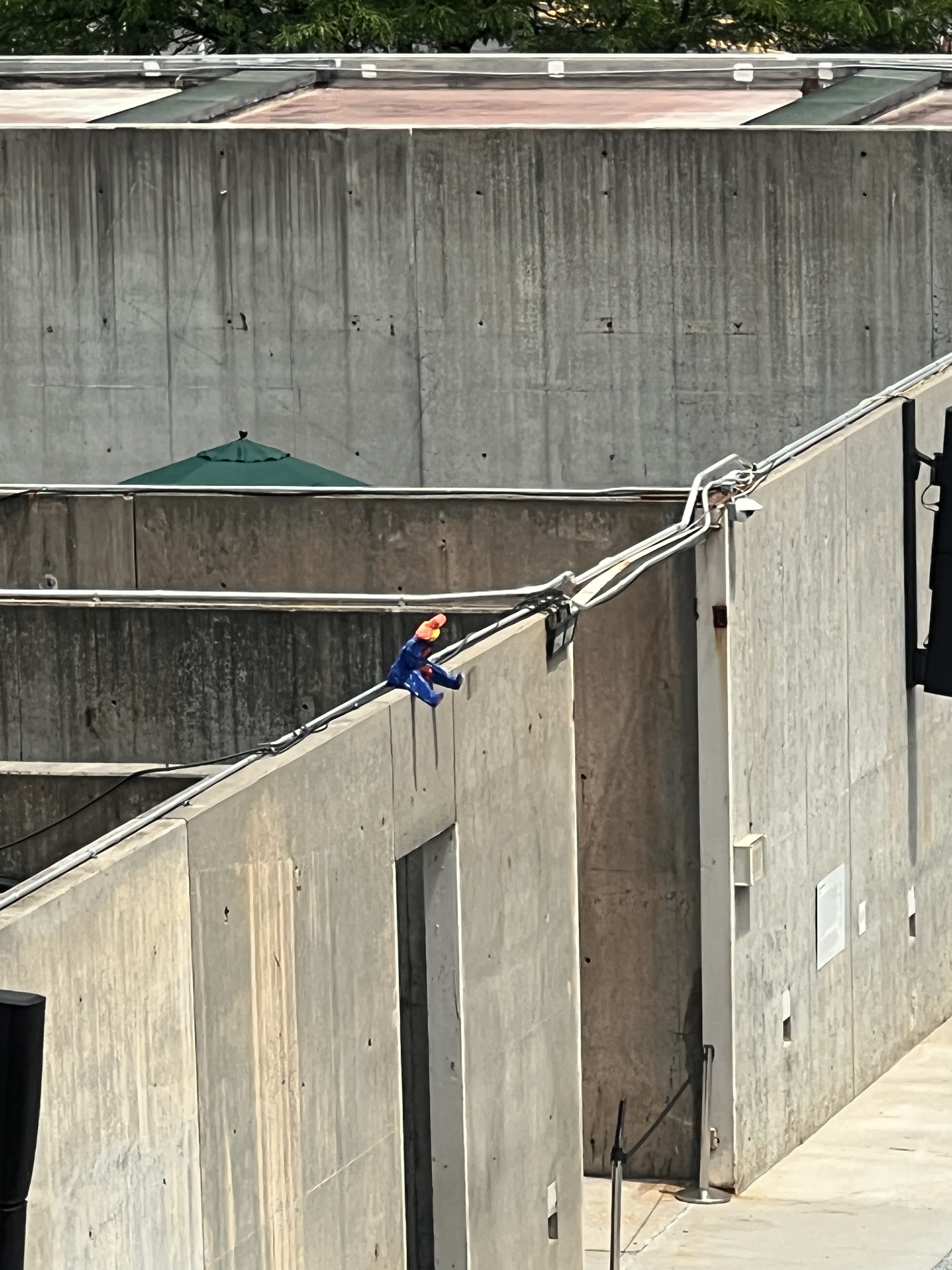Filling Space
“Life Between Buildings” at MoMA PS1
June 2, 2022 – January 16, 2023

In the 1970s, when the city faced a myriad of financial and infrastructural failures, artists stepped in and carved out places for artmaking, display, and community in the places where bureaucratic neglect was most visible: rubbish-filled lots, decaying post-industrial warehouses, and fragmenting city streets. “Life Between Buildings” at MoMA PS1 seeks to remunerate this history by presenting it alongside the continued legacy of this endeavor in a celebratory manner, highlighting projects that art-ify (though not necessarily beautify) public spaces through projects like community gardens, performances, and interventions. Rallying around the community garden as a format for reclaiming space in New York, “Life Between Buildings” proposes that more time and attention should be spared to cultivating these kinds of places.
PS1 is certainly a fitting forum for the exhibition’s queries given its own relationship to the history of refurbished and rehabilitated spaces for art in New York. “Life Between Buildings” begins with standard examples found in Gordon Matta-Clark’s explorations of the relationship between nature and urban infrastructure in the early 1970s and a surprising inclusion of archival material from a lesser-known series of performances in the Lower East Side in the early 1980s by the collective POOL, suggesting a new public and community-facing identity for artists in the proliferation of these kinds of projects, as well as the founding of art spaces like the Institute of Art and Urban Resources, now MoMA PS1. It then interweaves more recent examples of artists working in “interstitial spaces,” such as David L. Johnson’s series of works removing ownership placards from across the city.
The intention to cast the contemporary through the historical is made most clear in the ways that the exhibition’s curator, Jody Graf, has chosen to exploit the physical properties of the galleries. In the same first gallery, a cutaway in a wall in the first gallery creates an actual interstitial space that features a droll little ceramic figure by the artist collective Poncili Creación, one of many that can be found in surprising and unconventional places around the complex. It is moving outside of the most straightforward display approach that the works in “Life Between Buildings” become more imperative. One of the more compelling moments in the exhibition can be found in PS1’s hostile, exposed outdoor space in a collaborative project between the abolition-centered artist jakie sumell and the East Village Girl’s Club that places a garden within the spatial constraints of a typical solitary confinement cell in a federal prison, urging viewers to view the fragility of the small abundance of the garden in light of scarcity and the dispensability of undesired life.
The key terms and conceit of “Life Between Buildings” are, however, too indeterminate and roving to add up to a cohesive narrative. Interstitial, liminal, overlooked, and negative are used almost interchangeably to describe spaces where a material mélange of city bureaucratic actions, community organizers, and artists have made them only slightly more interesting than others. Moreover, the connection between projects like Tom Burr’s model of Central Park desire paths and a single gallery dedicated to artist Aki Onda’s audio memorialization of community gardens in New York City lacks the guiding spirit that precipitated the works. Ultimately, “Life Between Buildings,” cannot decide whether it is about nature or public space, or the performance of public space, or the performance of nature, nor does it attempt to suture these concepts together into a line of thought.
Its disjointed nature then does little to reclaim the in-between spaces it venerates nor does it propose them as alternative places for radical being. Rather, “Life Between Buildings” should be viewed as a small nudge toward thinking about how art gets space, particularly in places where scarcity and speculation dictate its parameters. It could have extended this to address the blurring between public and private that arts institutions like PS1 have struck their identities on. Arts institutions have long benefitted from artists’ predilection for filling in “empty” spaces and now model themselves to be forums for public and common space, an operation that has been predicated on the work, experimentation, and community know-how of artists. With the show’s overarching concept, the white walls that most of the works are hung on seem almost untenable, if not entirely inappropriate. If “Life Between Buildings” had pushed the boundaries of its own relationship to the physical place it is presented in, then, perhaps, it could have rooted itself in a broader untangling of the art world’s obsession with its own importance in creating, maintaining, and controlling space.